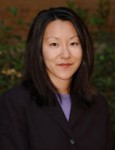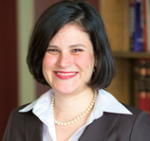Monthly Archives: January 2016
Jan 15, 2016 Christopher SprigmanIntellectual Property Law
Michela Giorcelli & Petra Moser,
Copyright and Creativity – Evidence from Italian Opera (2015), available at
SSRN.
Today opera fans in the United States are rich, old, and increasingly rare. But it wasn’t always that way. In the Eighteenth Century, opera was the closest thing to mass entertainment, especially in Italy. And that fact provides a platform for economists Michela Giorcelli and Petra Moser to say something interesting about the effect of copyright law on creativity. Giorcelli and Moser’s Copyright and Creativity – Evidence from Italian Operas, is a paper I liked, lots.
Giorcelli and Moser’s paper is a natural experiment using historical data surrounding an “external shock” – viz., Napoleon’s invasion and occupation of northern Italy between 1796 and 1802. The northern Italian states of Lombardy and Venetia adopted copyright laws in 1801, as a direct consequence of French rule. Six other Italian states studied by Giorcelli and Moser only began adopting copyright laws during a period that began a quarter-century later. Giorcelli and Moser collect historical data on 2,598 operas that premiered across the eight Italian states in question between 1770 and 1900, the most fertile years of Italian opera production, and a period that both precedes and follows the adoption of copyright by Lombardy and Venetia. Continue reading "A Lesson from the History of Italian Opera: Some Copyright Good/More Copyright Useless"
Jan 14, 2016 Kerry AbramsFamily Law
Elizabeth F. Emens,
Admin, 103
Geo. L.J. 1409 (2015).
Who prepares your taxes? Pays your bills? Handles disputes with insurance companies? Orders toner for your home printer? Creates shopping lists? Schedules playdates?
If you do any of these tasks, you are doing what Elizabeth Emens would call “admin.” Not to be confused with “chores,” such as taking out the garbage or doing the dishes, admin involves tasks that we generally associate with office work. Unlike activities that would be considered hobbies, admin isn’t usually done for its own sake, but to get something else done. As Emens succinctly puts it, “admin seems to many people like wasting time, even killing it.” If you’ve ever complained about “wasting time” on the phone or sitting around waiting for a repairperson to arrive, you were complaining about time spent doing admin. Continue reading "Making “Admin” Visible"
Jan 13, 2016 Davina CooperEquality
One intervention that has stayed with me from my first Law & Society Association meeting (Amsterdam, 1991) involved a British scholar who, midway through the conference’s feminist stream, spoke out against the assumed divide between academic and activist work. Scholarship, she commented, could be politically engaged work also. I was reminded of her words reading Michal Osterweil’s timely article on public anthropology and politics in which she explores how anthropological work might extend and enrich its political practice through both the engaged scholarship it carries out and by expanding the sites it recognises as theory-producing.
Osterweil starts by challenging the division in anthropology between activist research and cultural critique; she describes the former as working with and on behalf of marginalised communities, while the latter addresses politics in the realm of text and theory. Arguing that both are important as scholarly political practices, Osterweil challenges the presuppositions about action and politics underpinning the distinction between them. What gets counted and recognised as action or political also underlies a further, perhaps more fundamental, division, namely between academic and activist practices, as these get posited as two fundamentally different and separate spheres. As Osterweil puts it, there is a working assumption that academia comments upon the world it observes but remains steadfastly apart from. Imagining other worlds thus gets relegated to the academic sphere of intellectual imagining; outside practice, and so never able to flourish, or take hold, within it. Continue reading "Challenging the Academic/Activist Divide"
Jan 12, 2016 Shubha GhoshInternational & Comparative Law
In this article Professor Rochelle Cooper Dreyfuss of NYU Law School and Professor Susy Frankel of Victoria University of New Zealand tackle how international dynamics have shaped domestic intellectual property law and make an authorial appeal for policy reform through domestic and international institutions. In so doing, Professors Dreyfuss and Frankel exemplify the strong engagement with cutting edge conceptual and theoretical issues which Professor Erin Delaney and I hope will be the hallmark of our new Jotwell section.
Their article presents an elegant argument about current intellectual property debates. In the nineteenth century, intellectual property law was exclusively about incentives promulgated by national governments for domestic innovation and creation. International intellectual property treaties from the nineteenth century supplemented these national incentives through harmonization of legal rules to staunch leakage of works across borders through piracy. In contrast, the 1994 TRIPS Agreement, as part of the regime of free trade under the WTO, transformed intellectual property into a commodity. While trade traditionally has entailed the movement of goods, the WTO envisions a world in which patents, copyrights, and trademarks are themselves the object of cross border exchange. And more recently, with the negotiations over ACTA and TPP, intellectual property has transformed from a commodity to be traded to an asset in which companies invest to realize a return. Each shift has made intellectual property rights more privatized with little scope for consideration of the public interest and for the exercise of national sovereignty. Continue reading "Reviving the Original Scope of Intellectual Property, Internationally"
Jan 12, 2016 A. Michael FroomkinJotwellTax Law
Today we inaugurate a new Jotwell section on Comparative and International Law, edited by Professor Erin F. Delaney and Professor Shubha Ghosh. Together they have recruited a stellar and transnational team of Contributing Editors.
The first posting in the International and Comparative section is Reviving the Original Scope of Intellectual Property, Internationally by Shubha Ghosh.
Please look at our Call For Papers, and get in touch if you have suggestions for a new section, or if you have a review you would like to contribute to any existing section of Jotwell.
Jan 11, 2016 Zack BuckHealth Law
Janet L. Dolgin,
Unhealthy Determinations: Controlling Medical Necessity, 22
Va. J. Soc. Pol’y & L. 435 (2015), available at
SSRN.
In the fight to control health care costs, the determination of whether something is “medical necessary” is of paramount importance. A clear vision of medical necessity would allow payers, regulators, and doctors to arrive at universal and understood standards regarding clinical appropriateness and appropriate reimbursement. But, even in the midst of health care reform, its importance has been lost. In Unhealthy Determinations: Controlling Medical Necessity, Janet Dolgin makes a contribution to the scholarship that examines the perplexing topic of medical necessity by robustly arguing for its recognition and restructuring. In the piece, Dolgin focuses on the history of the doctrine, particularly on the idea that the doctrine more likely reflects the characteristics of the American health care system and the will of any given decision-maker, than it presents an actual useable clinical definition.
The quest for understanding medical necessity depends on two separate queries—one that focuses on the who: which actor it is within the modern American health care regime that is the decision-maker, and, secondly, of course, the what: what the standard will look like in a given clinical scenario. Indeed, medical necessity can be characterized as a rationing tool employed by the insurance industry or as a flexible standard used by physicians to justify expensive and unnecessary medical care. Accordingly, one would have expected defining medical necessity to have been an object of attention—for insurance companies, who want to constrict it, doctors, who want to expand it, and federal administrators, who want to control it—in the effort to reform health care under the Affordable Care Act (ACA). But instead, according to Dolgin, the ACA leaves many of the rules that existed before its passage governing medical necessity in place. Continue reading "Recognizing and Reinvigorating Medical Necessity"
Jan 8, 2016 Shuyi OeiTax Law
There has been a growing literature of late discussing how higher education should be funded and by whom, and Benjamin Leff and Heather Hughes make an important contribution to this conversation. One of the key questions currently being debated is whether equity-based models of higher education funding, such as income share agreements and human capital contracts, are viable and ought to be considered more seriously. It is here that Leff and Hughes interject, proposing a derivative instrument they call an “income-based repayment swap” (IBR swap) as a new equity-based method of funding legal education. The Leff-Hughes proposal is innovative and, though it poses some problems, may in fact be viable. What is more interesting, though, is the fact that they propose it at all and what this tells us about the state of the “human equity” market and its relationship to law and regulation.
Some background is in order: Since Milton Friedman and Simon Kuznets first discussed the notion in 1945, economists and others have floated the idea of the “human capital contract,” an instrument that would allow investors to provide capital to individuals in exchange for a percentage of that individual’s future earnings, in essence allowing individuals to issue a sort of equity interest in themselves. From Yale’s “tuition postponement program” of the 1970s to Portland’s “IPO Man” to athlete-tracking stocks to arrangements between baseball players and the buscones who represent them, the markets have dreamed up a number of variations on the human equity theme. Continue reading "Regulatory Gray Areas, Uncertainty, and “Human Equity”"
Jan 7, 2016 Michael MadisonTechnology Law
The Atomic Age of Data: Policies for the Internet of Things Report of the 29th Annual Aspen Institute Conference on Communications Policy, Ellen P. Goodman, Rapporteur, available at
SSRN.
The phrase “Internet of Things,” like its cousin “Big Data,” only partially captures the phenomenon that it is meant to describe. The Atomic Age of Data, a lengthy report prepared by Ellen Goodman (Rutgers Law) following a recent Aspen Institute conference, bridges the gap at the outset: “The new IoT [Internet of Things] – small sensors + big data + actuators – looks like it’s the real thing. … The IoT is the emergence of a network connecting things, all with unique identifiers, all generating data, with many subject to remote control. It is a network with huge ambitions, to connect all things.” (P. 2) The Atomic Age of Data is not a scholarly piece in a traditional sense, but it is the work of a scholar, corralling and shaping a critical public discussion in an exceptionally clear and thoughtful way.
The IoT is in urgent need of being corralled, at least conceptually and preliminarily, so that a proper set of relevant public policy questions may be asked. What are the relevant opportunities and hazards? What are its costs and benefits, to the extent that those can be discerned at this point, and where should we be looking in the future? That set of questions is the gift of this report, which is the documented product of many expert and thoughtful minds collaborating in a single place (face to face, rather than via electronic networks). Continue reading "Data for Peace: The Future of the Internet of Things"
Jan 6, 2016 Elizabeth JohCriminal Law
- Andrew G. Ferguson, Big Data and Predictive Reasonable Suspicion, 163 Univ. Penn. L. Rev. 327 (2015).
- Michael Rich, Machine Learning, Automated Suspicion Algorithms, and the Fourth Amendment, __ Univ. Penn. L. Rev. __ (forthcoming 2016), available at SSRN.
Hear the term “big data,” and the police are not likely to be the first word that comes to mind. Whether or not you are familiar with the term, the vast quantities of digitized information available today—and the data analytics that are applied to it—already shape your world. The movie recommended to you by Netflix, the date you chose on OkCupid, or the ad you saw on your Facebook feed are all the result of the pervasiveness of big data. That same big data revolution is coming to policing. The NYPD operates a “domain awareness system” that links license plate reader data, “smart” cameras, law enforcement databases, texts of 911 calls, and radiation sensors information from around the city. Police departments in Seattle and Los Angeles are piloting predictive policing software that directs officers to places where crime is most likely to happen in the future. Other law enforcement agencies are considering the adoption of social media software that sifts through tweets, likes, pins, and posts for potential on-line threats. To be sure, the police have always relied upon large quantities of data, but the promise of “big data” lies in its enormous volume, its reach, and the application of sophisticated computer analytics.
In response, there is a small but important emerging scholarship that addresses some of the difficult questions posed by the use of big data by the police. In two recent pieces, both Andrew G. Ferguson and Michael Rich address these issues especially well. While each focuses on different aspects of big data use, and each comes to different conclusions about the Fourth Amendment implications, this pair of articles introduces an evolving set of concerns that should be incorporated into every criminal procedure scholar’s current knowledge. Continue reading "What Big Data Means for the Fourth Amendment"
Jan 5, 2016 Robin EffronCourts Law
Patricia W. Hatamyar Moore,
The Anti-Plaintiff Pending Amendments to the Federal Rules of Civil Procedure and the Pro-Defendant Composition of the Federal Rulemaking Committees, 83
U. Cin. L. Rev. 1083 (2015), available at
SSRN.
On December 1, 2015, several major amendments to the Federal Rules of Civil Procedure took effect. Some of these changes might, at first glance, seem dry and technical, such as shortening the time to serve process. Other changes, such as the addition of a so-called “proportionality” standard to the scope of discovery, have been the subject of heated debate in the months since the changes were proposed.
While it might be tempting to dismiss all but the most controversial amendments as nothing more than footnotes in a new casebook, each of these amendments are part and parcel of anti-plaintiff trends in procedural rulemaking. Patricia Moore’s article should be required reading for any professor preparing to teach the new rules, because it combines a clear and practical outline to each of the rule changes with an incisive critique of the substance of the changes and the process by which they were promulgated. Continue reading "Anti-Plaintiff Bias in the New Federal Rules of Civil Procedure"














